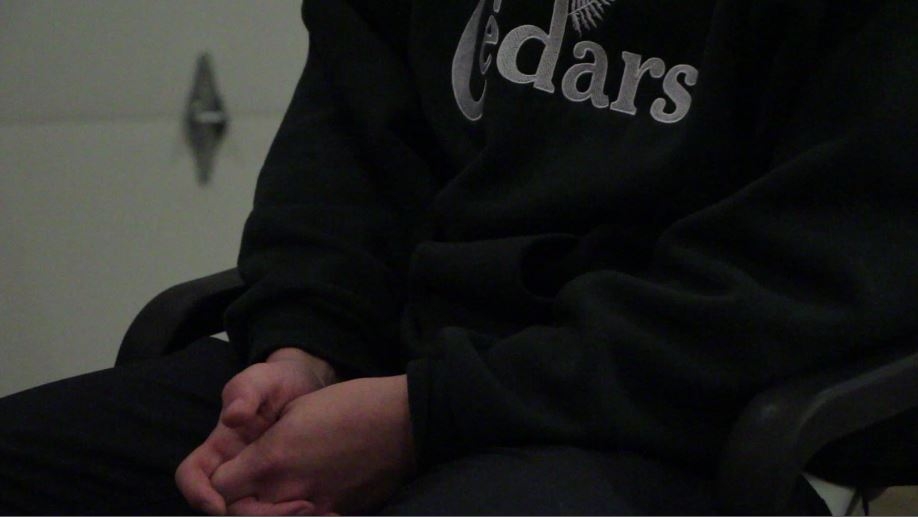
LISTEN: Stories from the other side: Voices of addiction and recovery
The BC Coroner’s Service will announce updated 2016 statistics on overdose deaths Wednesday, and the final tally is likely to be shocking.
And with the number of overdoses in B.C. reaching epidemic proportions, much of our attention has turned to the immediate crisis: overdose deaths, harm reduction, and the battle to keep addicts alive.
But while the face of addiction has become the mean streets of the Downtown Eastside, thousands of faceless others are silently fighting to get clean in treatment centres, and learning to live sober through recovery programs.
On a quiet South Surrey street in an otherwise unremarkable house, 10 young men are working through that process in a recovery program run by the Cedars Society. These are some of their stories.
James, 30, recovering fentanyl addict
“I was just livid with myself, I couldn’t look myself in the mirror, I couldn’t sleep I couldn’t eat. I had no sense of feeling, no sense of belonging. I felt really bad for my mom, she has three naloxone kits, she’s had to give me Narcan multiple times.”
That’s what James describes as the breaking point when he knew he needed long term help.
The decision to sign up for Cedars came after a suspected fentanyl overdose claimed his brother’s life last year.
“We were up all night doing crystal meth, and I think we only separated for a period of 12 hours and I just woke up to my mom just screaming. His face was already mottled blue, we tried to resuscitate him, I tried CPR, and then I got on the phone with 9-1-1. It didn’t pan out well,” he says.
James’ family has a history of addiction. His father, an alcoholic, has moved on to fentanyl and his brother got deep into drugs before he did.
But he says while he used pot and booze to dull anxiety as a youth, he credits prescriptions from dental and tonsil surgery as a teen with introducing him to opiates.
Once hooked, he says his tolerance grew so high only fentanyl would do the job, a dependence that cost him up to $200 a day, just to stay functional.
Before coming to Cedars, he says the situation got so bad, he had multiple overdoses in a single day.
James is candid about the fact that the recovery process can be two steps forward, one step back. He’s tried treatments and relapsed multiple times in Alberta.
“It’s been a long journey and it’s been really tough. It’s not fun out there, but it’s much better on the inside here. Recovery is definitely worth giving it a shot. It’s worked for a lot of people, it’s definitely working for me, it’s definitely different this time.”
From where he sits now, he says there needs to be more access to detox and recovery programs, and he says he wishes doctors were clearer about how addictive painkillers can be.
And he says he wishes people had a better understanding of how most addicts aren’t homeless or out of work — and how quickly drugs can turn anyone’s life around.
He says he hopes to try and start working in addiction medicine once his life is back on track.
Brian, 24, recovering heroin addict
“I had no idea about treatment or anything, or even 12 step programs. I knew it was there, but I didn’t know what it did, so I think that could have helped me for sure. I just felt so lost,” says Brian.
24-year old Brian enrolled at Cedars after losing control to a heroin addiction, after what many would call the ideal youth.
Growing up on Vancouver Island, he made the honour roll and rugby team in high school, was close with his family, and was pulling off a double major in environmental science when his life fell apart.
His route began with alcohol and marijuana, before partying brought him to cocaine and eventually heroin — a habit he maintained beneath the surface at college, but which went into overdrive with a bad breakup.
- RCMP disputes claim of agreement over Surrey transition in leaked letter to solicitor general
- ‘Racialized police brutality’: Indigenous leaders decry Vancouver arrest caught on camera
- Family hopes B.C. teen’s devastating crash spurs motorcycle safety
- Feel-good Friday: Global BC’s highlights of the week
“I was in just a terrible headspace, and I was introduced to opiates and it made me not feel anything, so it was great. And then I got physically dependent on it, and it went downhill from there.”
For Brian, recovery began with an intervention. His family pulled him from bed early one morning, confronting him with a room full of concerned friends.
“It needs to be quick because you’ve got to strike when the iron is hot. I was shocked, I had no idea what was going on. Well I kind of knew what was going to happen, it was very overwhelming. But at the same time, felt a sense of relief like finally I can go get help and stop doing this.”
Brian too describes the treatment process as the hardest thing he’s ever done, forcing himself to peel back the layers and confront the ugly reasons underlying his addiction.
But he says at the same time he’s happier than he’s been in years, having learned to accept he’s fighting a disease, something he wishes people on the outside of addiction could see more clearly.
“There’s a lack of awareness around treatment. Safe injection sites and all of that is great, it’s stopping people from dying. But it doesn’t get down to the core of the problem and actually treat people to get healthy.”
Brian says he hopes to re-enroll in school next fall.
Shaun, 25, recovering fentanyl addict
“I just physically withered away, emotionally wasn’t there at all, I was just kind of a walking shell. It just took everything I wanted and everything I had in my life prior to that away,” says Shaun.
For the 25-year-old, the road to recovery has also been long and fraught with setbacks.
Another Vancouver Island native, he says he too got hooked through a prescription after his wisdom teeth were removed, leading to oxycodone pills from the street, and eventually fentanyl and a $400-$500 a day habit.
He dropped out of school and stopped working, and eventually entered treatment for the first time in 2014 with a push from his family.
“At that point, I hadn’t had enough bad in my life to think that this was a lifelong disease that was going to kill me, so I kind of blew smoke up everyone and didn’t really take the thing seriously.”
It didn’t take. On the other side, he found drugs again, got in trouble with the law, and tried stints in treatment in Cranbrook, Edmonton, and Prince George.
He tried drug replacement therapy, with Methadone and Suboxone, but says while that route kept him alive, it was no solution.
“It’s a damage control thing. … I was keeping myself out of the morgue, it was just an elongation of my pain I guess. Whereas here I go through quickly, go through the pain and then I can live again.”
He says it finally reached a point where he realized his life was in danger, and that if he wanted to live he needed help.
“It’s definitely more difficult each time coming back after a treatment centre or a stint of sobriety. But it makes me realize each time it’s worth it, and that it’s going to be worth whatever struggles are ahead.”
From this side of addiction, he says it would have helped if he’d had the chance to meet people who’d lived both sides of the disease, role models and success stories who could provide living proof there is a way out.
“It would help if people listened more to people who recovered from the disease. When I first went into treatment I had the idea that they were all going to be homeless and guys from the Downtown Eastside and stuff like that, and I was shocked to see that they were people just like me.”
RJ Melnichuck, house manager
“I just wish that recovery has a face in this fight against addiction,” says RJ Melanchuck.
A recovered alcoholic and cocaine addict himself, he’s been working for Cedars since Januray of last year, when he helped open its pair of houses in Surrey.
“We’re part of anonymous programs this whole time, and no one knows what we do. I had a family friend who was almost 60 years in the program, and his son had no idea he was in AA. He just knew his father was a great man. At his funeral, there was 500 people who showed up saying his father changed their lives.”
Melnichuck says it took two bouts of treatment and recovery for him to come to terms with his addiction. He says the first time, at 22 he was too young.
It’s one of the toughest jobs he says he’s ever had, guiding addicts both through the recovery process itself, but also teaching them life skills they’ve lost in the depths of their illness.
Having been through it himself, he says allows him to understand what they’re going through — but also shows that it can be done.
“Emotions and feelings and all of that stuff comes back because there’s no numbing it anymore. And you’ve kind of got to face that head on,” he says.
“When you come to a recovery house you’re introduced back into life, but sober for the first time… usually, or maybe second or third time. But I think the biggest challenge is sort of hoping that people actually want to have this. I think that’s kind of what we try to let them figure out for themselves. And sometimes it’s a little bit of a push.”
Shifting the focus
For Marshall Smith, Executive Director of the Cedars Society, the conversation around addiction has become so focused on keeping drug users alive, it’s given up on teaching them how to live again.
“If you had asked me when I was on the street what I wanted, I would tell you very likely what a lot of addicts in active addiction would,” he says.
“I wanted free drugs, I wanted a safe place to use them, and I wanted the police to go away. And likely that’s what they would tell you today. If you asked me now, or any of the men in this house who are in recovery, to look back and tell you what I needed back then, I would give you a very different answer.”
He speaks from experience: The former chief of staff to the minister responsible for the 2010 Olympic bid, he spent years on the streets of the DTES, caught in a spiral of alcohol and cocaine addiction.
He credits a “stern” intervention by the Vancouver Police with putting him on the road to recovery and advocates a similarly aggressive approach.
Smith says while there’s a need for supervised injection sites they’re just one piece of the puzzle, and more attention needs to go into building the longer-term system of care for addicts that gets them away from drugs.
“We have been focused a lot in this province on a one-pillared approach, which is harm reduction, and we need those services. But we also have to be focused on the solution to this disease, which is recovery. We need more focus on moving people along that continuum assertively.”
In that process lies the challenge. The current system includes scores of detox and treatment centres, more than 100 provincially registered but privately operated recovery houses, programs through local health authorities, and limited funding for low-income people through the Ministry of Social Development.
It’s complicated enough to have earned a description as “fragmented, uncoordinated, and inaccessible,” by the Canadian Mental Health Association in a report to the legislature last summer.
Smith says navigating that maze of agencies and paperwork is something he himself finds difficult.
For someone who’s dopesick or high, he says it’s virtually impossible.
That’s something that needs to change, he says, if we want to see a long-term solution to the crisis.
“We have a sort of heterogeneous grouping of individual service providers out there. We don’t really have an addiction care system. We need to build that. That doesn’t exist currently.”
B.C. Minister of Health Terry Lake is expected to make an announcement Wednesday related to substance use treatments.








Comments